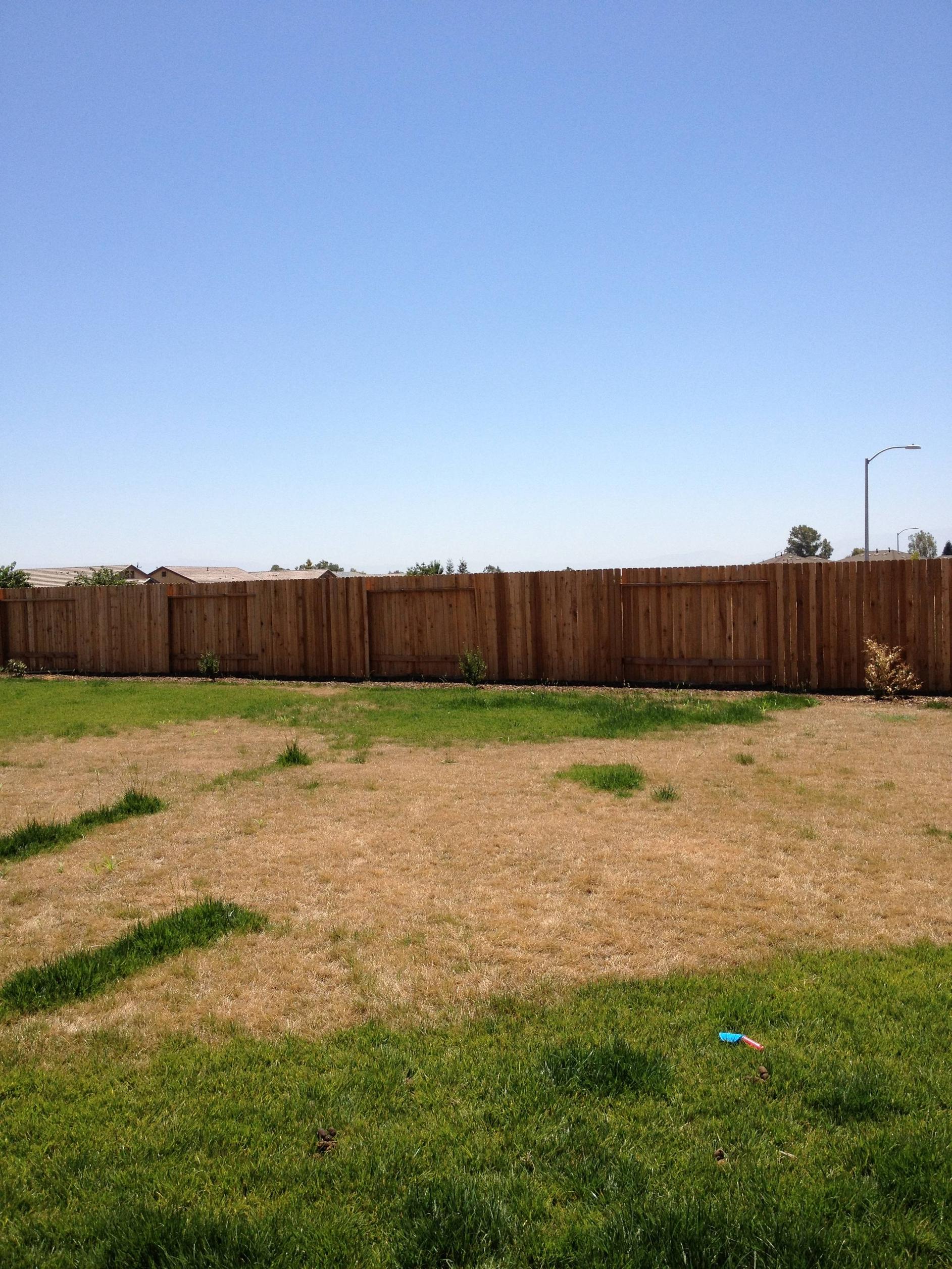About a month ago I asked this question about my lawn. To summarize, I just had this house built, so the grass was only put in a few months ago and the sprinklers did not turn on for 1 week last month. The suggestions I got all said to just keep watering it and it should come back in a few weeks. It's been over a month now and I see very little improvement to the grass. This is what it looks like now.

I also applied this plant food after a suggestion from the original landscape company and I have not cut the grass at all. Is there anything else I can do to get my lawn back or do I need to cut my losses?
EDIT: To add to the information above; the grass was sod when it was put in a few months ago. Do I need to hire a landscaping company to tear it all out and re-apply sod? What are my options?
